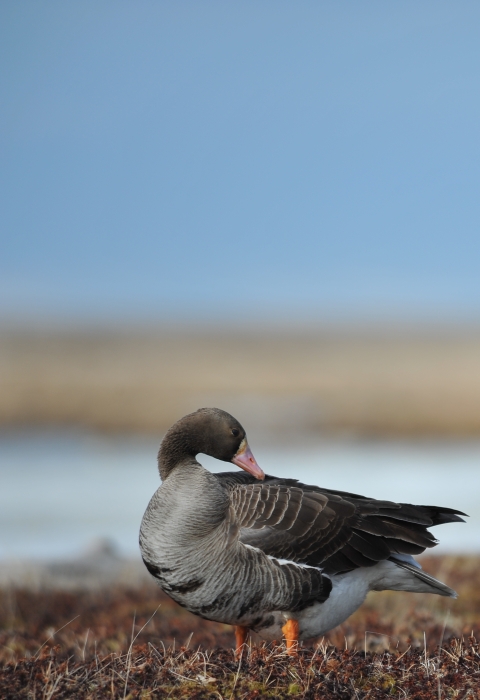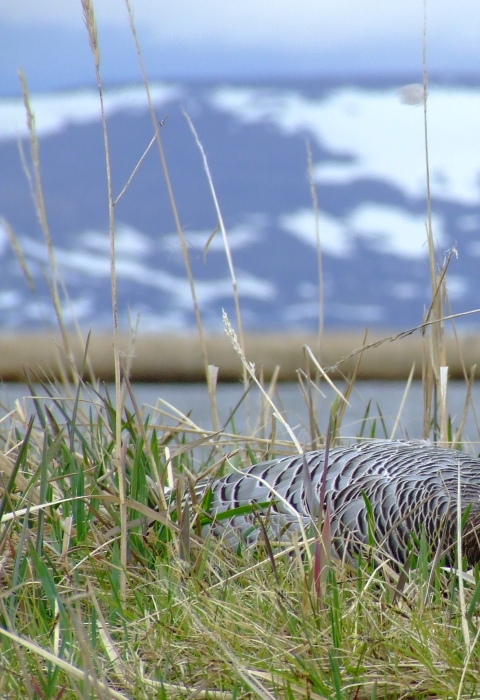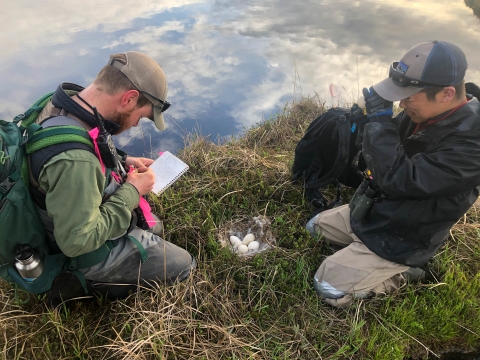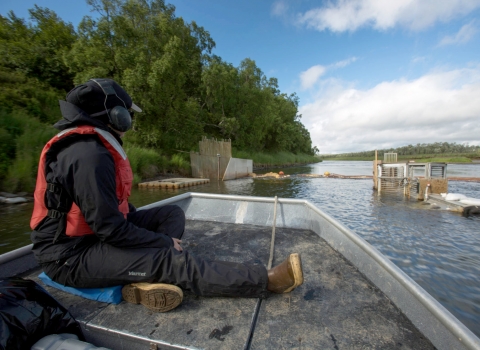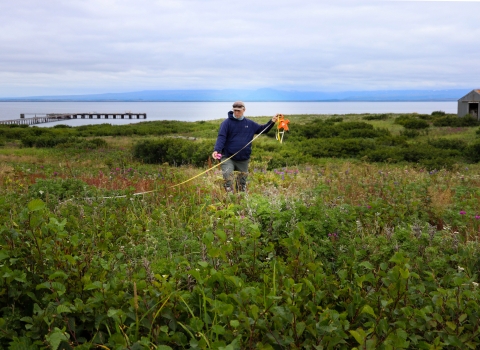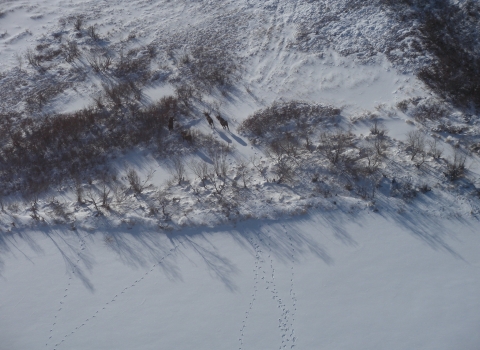Projects and Research
Current monitoring and research efforts include:
• Kuskokwim fisheries harvest surveys, with emphasis on Chinook salmon
• Monitoring and management efforts of emperor geese
• Monitoring of Threatened and Endangered species, such as Steller’s eiders
• Monitoring and management of Mulchatna caribou.
The East Fork Andreafsky River weir is located 43 kilometers upstream of the confluence of the Yukon and Andreafsky rivers, near the village of St. Mary’s. We've been operating this weir from mid-June until early August since 1994 (with the exception of 2020 due to COVID-19). This project is an important platform for assessing and reconstructing the lower Yukon River Chinook and summer Chum...
As part of the National Wetlands Inventory, we are mapping and digitizing high priority wetlands in Alaska’s 16 National Wildlife Refuges.
The U.S. Fish and Wildlife Service is the principal federal agency tasked with providing public information on the status and trends of our Nation's wetlands. Our National Wetlands Inventory provides detailed information...
Invasive Species Program staff collaborate with Alaska's National Wildlife Refuge, the State of Alaska and other partners to protect Alaska's lands and waters by working to detect invasive species infestations while they’re still relatively small and have the highest chance of being successfully eradicated. We survey terrestrial, freshwater, and marine environments for invasive plants and...
Moose are thought to have colonized the Yukon-Kuskokwim drainages in the 1940s. Local subsistence hunters started using moose as an important subsistence food increasingly from that time forward. In recent years, salmon subsistence fishing has been regulated often with limited openers for Chinook salmon. Hunting for caribou from the Mulchatna caribou herd is closed for conservation purposes....
